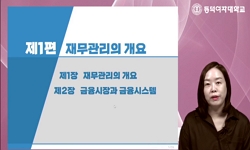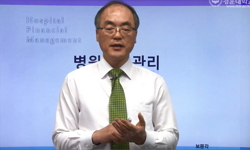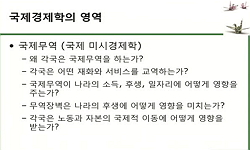Income smoothing has existed for decades, and there are generally two schools of thought as to what motivates managers to smooth. First, income smoothing presents an arguably efficient vehicle for managers to reveal private information. Second, income...
http://chineseinput.net/에서 pinyin(병음)방식으로 중국어를 변환할 수 있습니다.
변환된 중국어를 복사하여 사용하시면 됩니다.
- 中文 을 입력하시려면 zhongwen을 입력하시고 space를누르시면됩니다.
- 北京 을 입력하시려면 beijing을 입력하시고 space를 누르시면 됩니다.

이익유연화가 자본비용을 감소시키는가?-유가증권상장기업과 코스닥상장기업을 중심으로- = Are Income Smooth Associated with a Lower Cost of Capital? -Focuses on KSE and KOSDAQ Listed Firms-
한글로보기https://www.riss.kr/link?id=A104296657
- 저자
- 발행기관
- 학술지명
- 권호사항
-
발행연도
2012
-
작성언어
Korean
- 주제어
-
등재정보
KCI등재
-
자료형태
학술저널
- 발행기관 URL
-
수록면
33-63(31쪽)
-
KCI 피인용횟수
25
- 제공처
- 소장기관
-
0
상세조회 -
0
다운로드
부가정보
다국어 초록 (Multilingual Abstract)
Income smoothing has existed for decades, and there are generally two schools of thought as to what motivates managers to smooth. First, income smoothing presents an arguably efficient vehicle for managers to reveal private information. Second, income smoothing represents “garbling”, that is, smoothing is an exercise undertaken by managers in an attempt to fool analysts and others and to enhance managerial compensation. Using survey data, Graham et al. (2005)report that corporate executives express a strong desire to report smooth earnings paths, holding cash flow volatility constant. Surprisingly, executives also indicate a willingness to sacrifice long -term value to achieve smoother earnings. A primary motivation offered for such behavior is that executives believe that investors perceive firms with smoother earnings to be less risky, and thus demand a lower expected return, or cost of capital. Prior studies examines income smoothing in the context of equity markets. However, this study is to complement these studies by examining income smoothing using cost of capital data. That is, the objective of this study is to investigate the effect of income smoothing on cost of capital (weighted average cost of capital;WACC). The basic idea is that the firm value does not depend on how the stakeholders finance it, but this is the stockholders (equity) and creditors (liabilities to banks, bondholders, etc). If income smoothing is informative, or only firms with good prospects elect to smooth, then smoothing firms may exhibit a lower cost of capital. On the other hand, if income smoothing is garbling and investors can recognize smoothing as garbling, then smoothing firms could exhibit a higher cost of capital as investors and creditors punish managers for gaming earnings.
We examine all listed firms in the Korean stock market. Tests are performed using a full sample of KSE and KOSDAQ listed firms and also using subsamples of each stock exchange. Income smoothing is measured using two proxies following Leuz et al. (2003) and Tucker and Zarowin (2006).
WACC data are extracted from the KIS-VALUE database provided by KIS (Korea Investor Service). We obtain a final sample that consists of 2,579 firm-years for KSE and 3,403 firmyears for KOSDAQ listed firms from 2002 to 2009 are gathered from KIS-VALUE files.
The results of this paper indicate that higher (lower) income smoothing firms exhibit a lower (higher) cost of capital in all listed firms (KSE and KOSDAQ listed firms). Therefore, income smoothing appears to be a significant determinant of the cost of capital. This results are still hold even after appling a fractional ranks variable and a continuous variable as a dependent variable.
And also t-statistics from Newey and West (1987) are significant, suggesting that our results are robust. Our results support the notion that income smoothing represents an information-signaling mechanism, rather than a garbling device. Thus, we document empirically that an important effect of managers’ use of financial reporting discretion is to reveal more information about firms’ future earnings and cash flows. Our work contributes to the literature by shedding new light on this information-versus-garbling debate. Therefore, these findings are very useful and provide a lot of important implications to regulators, investors and creditors that are interested in income smoothing behavior. Academics can also apply the discussion in this paper for related researches.
국문 초록 (Abstract)
본 논문은 기업의 이익유연화 정도가 자본비용에 어떠한 영향을 미치는가를 규명하는데 있다. 경영자는 이익유연화를 통해 보고상 이익수준의 변동성을 줄여 미래 이익에 관한 좋은 전망을...
본 논문은 기업의 이익유연화 정도가 자본비용에 어떠한 영향을 미치는가를 규명하는데 있다. 경영자는 이익유연화를 통해 보고상 이익수준의 변동성을 줄여 미래 이익에 관한 좋은 전망을 자본시장에 전달하려는 유인이 있다. 그 이유는 기업이 투자자 및 채권자로부터 보다 저렴하게 자본을조달하는 것이 가능해지기 때문이다. 따라서 본 연구는 이익유연화 정도가 높은 기업일수록 자본조달비용이 감소될 것으로 기대하였다. 이를 알아보기 위하여 본 연구는 유가증권상장기업과 코스닥상장기업을 대상으로 가중평균자본비용과 이익유연화 변수와의 관련성을 조사하였다. 이익유연화 변수는 Leuz et al.(2003) 및 Tucker and Zarowin(2006)의 두 방법에 따른 비율 변수 측정치 외에도 차이 변수 측정치를 병행해서 사용되었다. 특히 이들 측정치는 개별 변수간에 나타날 수 있는극단치의 영향을 최소화하기 위해 Francis et al.(2004)의 방법에 따라 역의 백분위 순위등급(reverses fractional ranking) 변수로 계산되었다.
분석기간은 2002년부터 2009년까지이며 금융업을 제외하고 12월 결산법인을 대상으로 하였으며, 유가증권상장기업은 2,579개 기업/연 자료가, 코스닥상장기업은 3,403개 기업/연 자료가 최종표본으로 이용되었다.
실증결과는 다음과 같다. 첫째, 상장기업에 대한 전체표본의 결과에서는 일정 변수를 통제한 후에도 이익유연화 정도가 높은 기업일수록 가중평균자본비용은 유의하게 낮게 나타났다. 즉 이익유연화 정도는 자본비용과 음(-)의 관계가 있으며, 이는 기업이 이익을 유연화 할수록 자본시장의투자자와 채권자들은 호의적인 반응을 보인다는 결과이다. 둘째, 전체표본을 유가증권상장기업과코스닥상장기업으로 나누어 분석한 결과에서도 전체표본의 경우와 일치되게 두 시장에 속한 기업들에서 모두 이익유연화 변수와 자본비용 간에는 유의한 음(-)의 관계가 나타났다. 이상의 연구결과들은 이분산성 및 횡단면-시계열적 종속성 문제를 완화시키는 Newey and West(1987)의 검증결과 및 여러 민감도 분석을 추가로 수행한 검증결과에서도 일관성 있게 나타났다.
이상의 결과를 종합하면 국내 유가증권상장과 코스닥상장기업들의 경우 이익유연화 정도가 높으면 투자자 및 채권자에게 보고이익의 변동성을 감소시켜 미래 이익에 관한 좋은 전망을 전달함으로써 자본시장에 긍정적인 시장의 인지(market’s perception)를 가져온다는 결과로서 기업은 이익유연화를 통해 자본비용의 감소를 실현시키고 있다는 발견이다.
본 연구는 이익유연화가 자본시장의 참여자인 투자자 및 채권자들에게 호의적인 반응으로 평가되고 있음을 자본비용 관점에서 보여주었다는 점에서 의의가 있다. 이러한 측면에서 본 연구결과는 이익유연화 관련연구에 추가적인 공헌점을 제공해 줄 것으로 예상된다. 또한 본 연구의 검증결과는 상장기업들이 이익을 유연화하려는 현상을 이해하는데 있어서도 도움이 되며, 이는 학계, 실무계 및 회계제정기관이 이익유연화 현상에 대한 재조명을 하는데 있어서도 유익한 정보와 시사점을 제공해 줄 것으로 기대된다.
참고문헌 (Reference)
1 송인만, "회계변경의 이익유연화현상과 주가 반응" (14) : 221-246, 1992
2 송인만, "이익유연화현상과 정보효과:투자자가 유용한 정보를 얻을 수 있는가" (4) : 193-220, 1997
3 최종서, "이익유연화가 회계이익 및 현금흐름의 정보가치에 미치는 영향" (40) : 215-236, 2004
4 양동훈, "이익유연화가 기업의 부채조달비용에 미치는 영향에 관한 연구" 한국회계학회 16 (16): 57-78, 2007
5 박종일, "이익유연화, 보수적 회계처리 및 재량적 발생액이 신용등급에 미치는 영향" 한국경영학회 40 (40): 1015-1053, 2011
6 김확열, "감사보수가 재무제표 보수성과 자본비용에 미치는 영향" 한국회계정보학회 10 (10): 81-111, 2010
7 DeFond, M., "Smoothing income in anticipation of future earnings" 23 : 115-139, 1997
8 Fama, E. F., "Size and book-to-market factors in earnings and returns" 50 : 131-155, 1995
9 Beatty, A., "Managing Financial Reports of Commercial Banks: The Influence of Taxes, Regulatory Capital and Earnings" 33 : 231-261, 1995
10 Beidleman, C. R., "Income smoothing:The role of management:A reply" 48 : 653-667, 1973
1 송인만, "회계변경의 이익유연화현상과 주가 반응" (14) : 221-246, 1992
2 송인만, "이익유연화현상과 정보효과:투자자가 유용한 정보를 얻을 수 있는가" (4) : 193-220, 1997
3 최종서, "이익유연화가 회계이익 및 현금흐름의 정보가치에 미치는 영향" (40) : 215-236, 2004
4 양동훈, "이익유연화가 기업의 부채조달비용에 미치는 영향에 관한 연구" 한국회계학회 16 (16): 57-78, 2007
5 박종일, "이익유연화, 보수적 회계처리 및 재량적 발생액이 신용등급에 미치는 영향" 한국경영학회 40 (40): 1015-1053, 2011
6 김확열, "감사보수가 재무제표 보수성과 자본비용에 미치는 영향" 한국회계정보학회 10 (10): 81-111, 2010
7 DeFond, M., "Smoothing income in anticipation of future earnings" 23 : 115-139, 1997
8 Fama, E. F., "Size and book-to-market factors in earnings and returns" 50 : 131-155, 1995
9 Beatty, A., "Managing Financial Reports of Commercial Banks: The Influence of Taxes, Regulatory Capital and Earnings" 33 : 231-261, 1995
10 Beidleman, C. R., "Income smoothing:The role of management:A reply" 48 : 653-667, 1973
11 Dichev, I. D., "Earnings volatility and earnings predictability" 47 : 160-181, 2009
12 Amiram, D., "Earnings smoothness and cost of debt. Working paper" University of North Carolina 2011
13 Dye, R., "Earnings management in an overlapping generations model" 26 : 195-235, 1988
14 Francis, J., "Costs of equity and earnings attributes" 79 (79): 967-1010, 2004
15 Dhaliwal, D. S., "Auditor fees and cost of debt" 23 (23): 1-22, 2008
16 Ahmed, A. S., "Audit quality, alternative monitoring mechanism, and cost of capital:An empirical analysis" Texas A&M University 2008
17 Fernando, G. D., "Audit quality attributes, client size and cost of capital" Syracuse University 2008
동일학술지(권/호) 다른 논문
-
- 한국세무학회
- 최연식
- 2012
- KCI등재
-
실물적 이익조정이 자기자본비용에 미치는 영향-한국기업을 중심으로-
- 한국세무학회
- 전홍민
- 2012
- KCI등재
-
- 한국세무학회
- 남혜정
- 2012
- KCI등재
-
스톡옵션 부여 이후 연구개발비지출이 스톡옵션의 행사와 장기경영성과에 미치는 영향
- 한국세무학회
- 고윤성
- 2012
- KCI등재
분석정보
인용정보 인용지수 설명보기
학술지 이력
| 연월일 | 이력구분 | 이력상세 | 등재구분 |
|---|---|---|---|
| 2026 | 평가예정 | 재인증평가 신청대상 (재인증) | |
| 2020-01-01 | 평가 | 등재학술지 유지 (재인증) |  |
| 2017-01-01 | 평가 | 등재학술지 유지 (계속평가) |  |
| 2013-01-01 | 평가 | 등재 1차 FAIL (등재유지) |  |
| 2010-01-01 | 평가 | 등재학술지 유지 (등재유지) |  |
| 2007-01-01 | 평가 | 등재학술지 선정 (등재후보2차) |  |
| 2006-01-01 | 평가 | 등재후보 1차 PASS (등재후보1차) |  |
| 2004-07-01 | 평가 | 등재후보학술지 선정 (신규평가) |  |
학술지 인용정보
| 기준연도 | WOS-KCI 통합IF(2년) | KCIF(2년) | KCIF(3년) |
|---|---|---|---|
| 2016 | 1.23 | 1.23 | 1.14 |
| KCIF(4년) | KCIF(5년) | 중심성지수(3년) | 즉시성지수 |
| 1.29 | 1.2 | 2.08 | 0.23 |




 KCI
KCI







